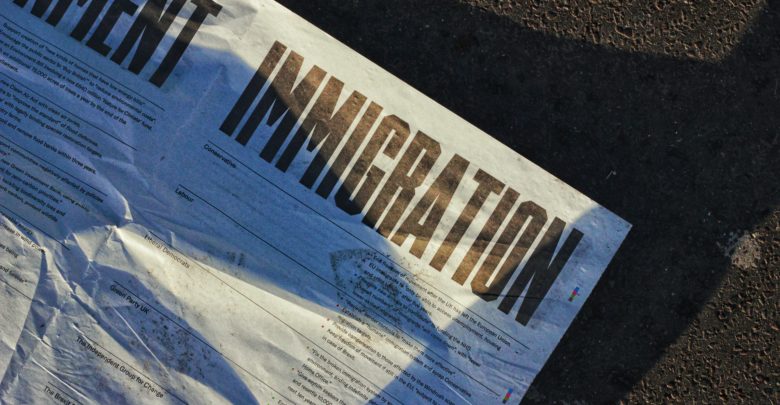Hostile Terrain 94 provides insight into undocumented immigrant experience
Hostile Terrain 94 is an art exhibit that displays the stories and loss of undocumented migrants crossing the Mexico-U.S. border
 Supplied: Metin Ozer
Supplied: Metin OzerA workshop as part of the Hostile Terrain 94 project sheds light on the undocumented migration crisis in the United States.
Hostile Terrain 94 is an art project sponsored and organized by the Undocumented Migration Project. The University of Alberta exhibition ran from February 23 to March 19 in the FAB Gallery, and featured an exhibition of approximately 3,200 toe tags that represent migrants who died trying to cross the Mexico-United States border between 1994 and 2019. Each tag contains handwritten information about each specific person. such as where their body was found, their cause of death, the condition in which their body was found, and the age and name of the person if their body was able to be identified.
In workshops leading up to the exhibition, volunteers wrote out this information onto the tags by hand and, throughout the process, we begin to truly understand the human cost of migration policies.
This project is called Hostile Terrain 94 because in 1994, the policy of “Prevention Through Deterrence” was implemented, causing the closure of popular crossing points, and thereby discouraging migrants from crossing, as the only way to cross would be to go through the “hostile terrain” of areas such as the Sonoran Desert of Arizona. This policy proved ineffective, as more than six million people have attempted to migrate through this desert since 2000, according to the Undocumented Migration Project, and thousands have perished during this migration.
Jaymie Heilman, a professor at the University of Alberta, and Laura Velazquez, a PhD candidate, were the two people in charge of the project at the University of Alberta. I was lucky enough to do the workshop twice, and both times I had the same emotional, jarring experience.
The workshop starts with a powerful story from Heilman about a family that was denied asylum into the United States and made the decision to enter illegally, knowing that they had a small chance of survival if they were to go back home, especially with their young daughter. They attempted to cross the Rio Grande but were swept away by the strong current and died.
The purpose of telling this story right at the beginning of the workshop was to illustrate the fact that asylum seekers who die during their migration are real people with real families and possess a desperate hope for a better future.
According to Heilman, the reason that workshop volunteers wrote out the information of the deceased migrants on the tags by hand is so that they pay as much attention as possible while writing and have time to reflect.
The process of writing was an effective method, and I found myself getting emotional as my mind processed the various ages of the deceased migrants that I was writing a tag for, ranging anywhere from seven to 65.
Despite the limited information I was given, I also found myself creating stories in my head as to why the asylum seekers could have been fleeing. There were some bodies that were reported on the same day and found very close together, and so I wondered whether they had come together.
Another thing that was on my mind was how lucky I am to be here today. My grandparents left El Salvador for the United States in the 1970s to flee the civil war with my mother and her siblings. The last thing I would ever want to do is discredit how hard they worked and the racism, discrimination, manipulation, and deceit that they encountered.
However, I do know that there are many other Latin Americans in the exact same situation who are willing to work just as hard that will never be granted asylum.
Mere luck has a lot to do with the fact that I am pursuing a degree at a top Canadian university, living comfortably, and contributing to the workforce. I could not bring myself to suppress these thoughts while I was writing, which I think was the point of writing by hand.
Velazquez shares a similar connection and is very passionate about shedding light on the dehumanizing way migrants are forced to seek asylum, and it is why she worked with Heilman to make this project a reality. Velazquez even conducted a workshop in Spanish, which meant a lot for her, as well as many other Latinx participants, because Spanish is her native language. Doing the workshop in Spanish was also special because many of the deceased likely also spoke Spanish.
Although it is impossible to bring back the dead, the best thing we can do now is educate ourselves on the policy of “Prevention Through Deterrence,” its dehumanizing results, and acknowledge that the people who died were not just numbers, but real people.




